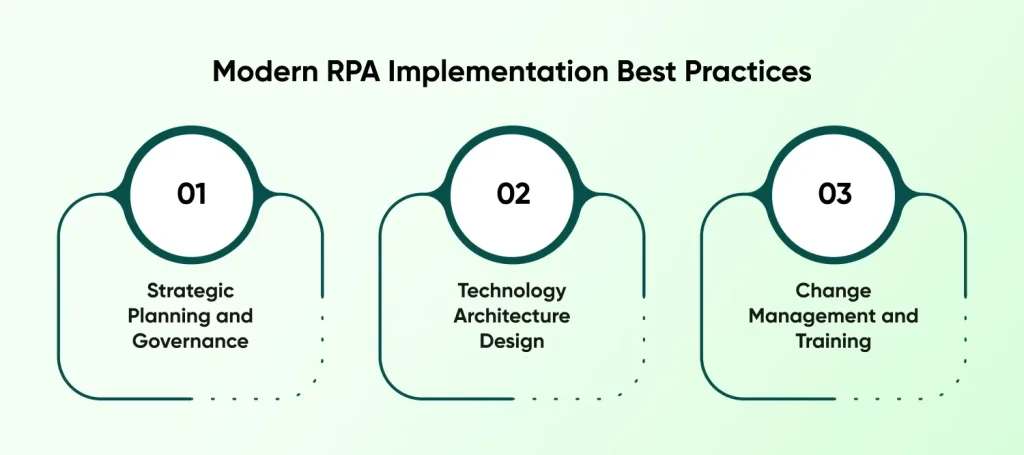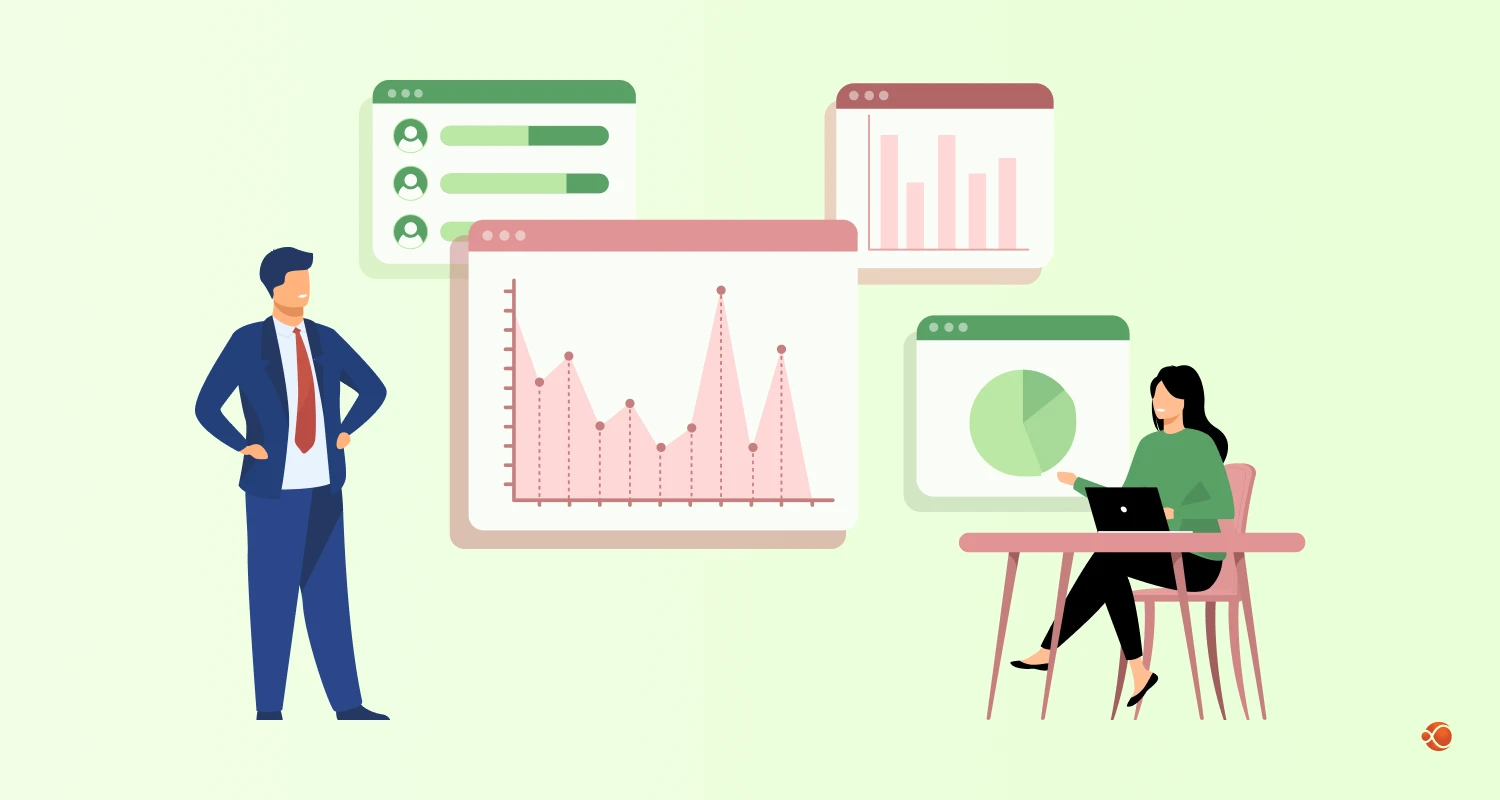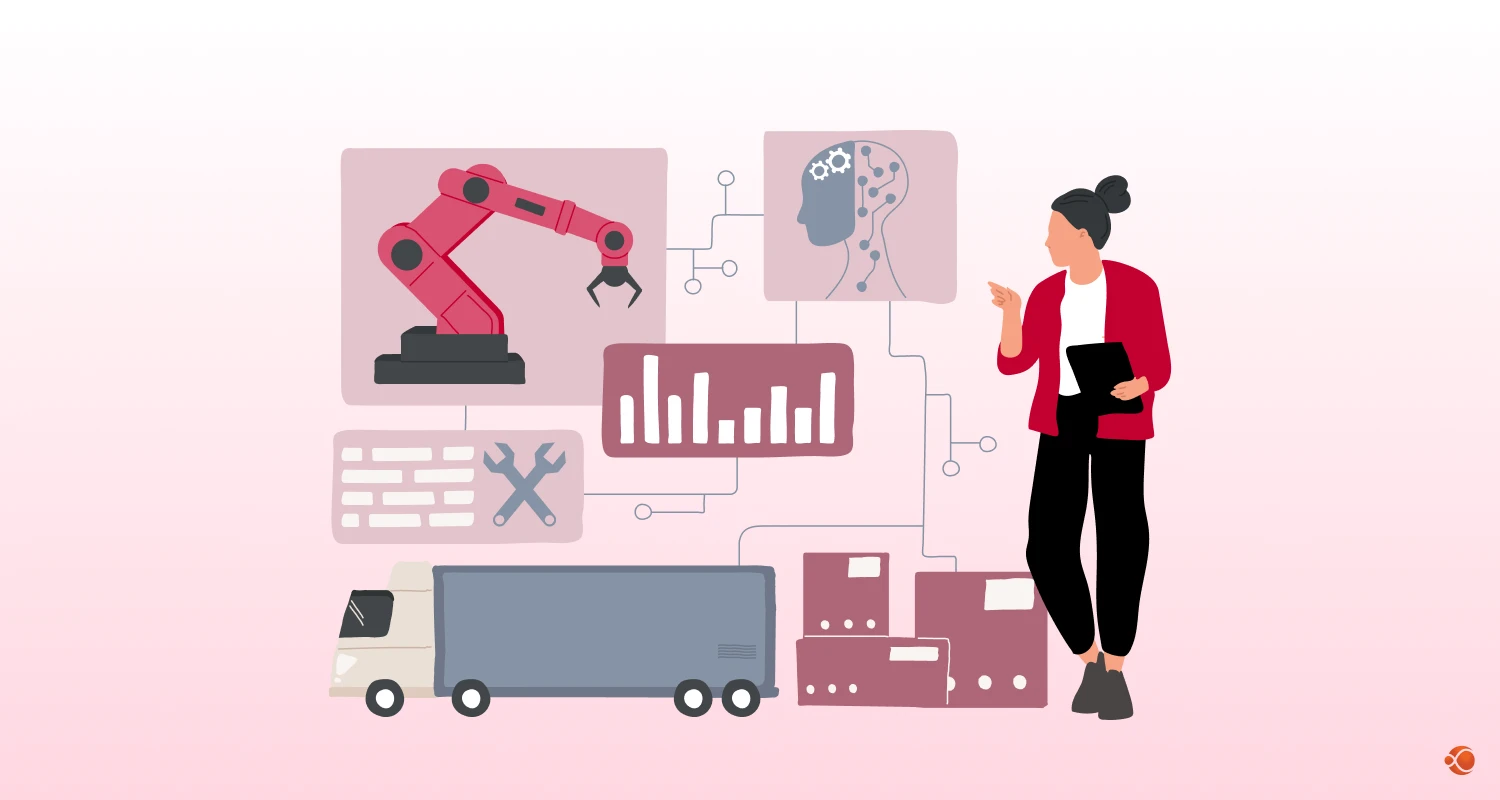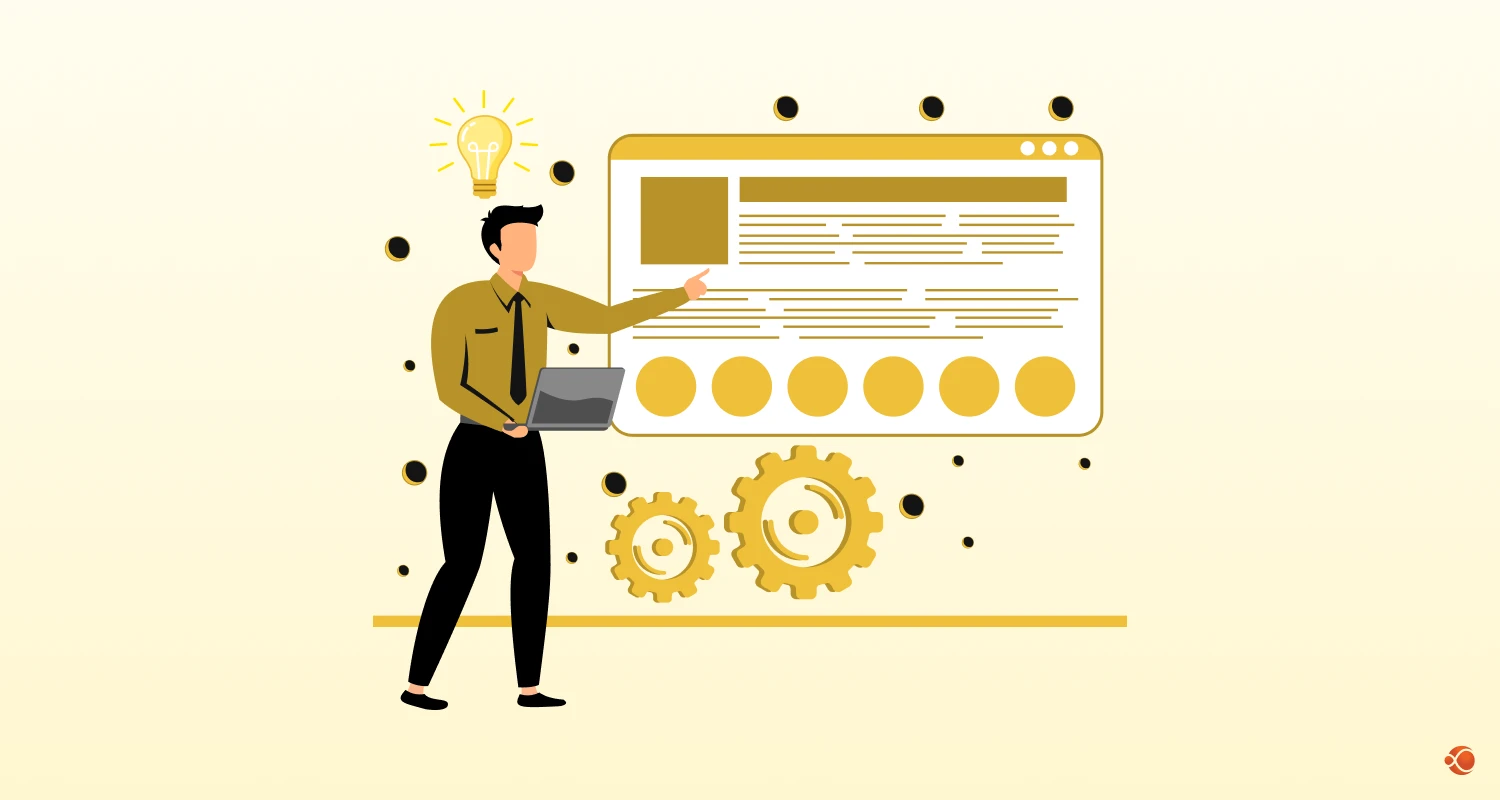The future of RPA is here, and it’s more intelligent than ever before. Robotic Process Automation has evolved from simple task automation into sophisticated systems that think, learn, and adapt alongside human workers. Businesses are experiencing a great change in how they approach automation and digital transformation. As we look to the future, robotic process automation is being completely reimagined through the integration of artificial intelligence and machine learning. This transformation isn’t just about doing things faster—it’s about unlocking new ways to work smarter, drive innovation, and create real value across the organization.
The global RPA market value is expected to reach $23.9 billion by 2027, but this growth represents more than market expansion – it signals a paradigm shift from reactive task execution to proactive process intelligence.
The future of RPA technology lies in hyperautomation, where multiple technologies combine to automate entire business processes end-to-end. Organizations implementing comprehensive RPA development services today are positioning themselves as leaders in tomorrow’s automated business landscape.
Understanding the Current RPA Landscape
What Traditional RPA Does Well
Traditional Robotic Process Automation excels at handling structured, rule-based processes with predictable patterns. These systems have proven their value in
- Automating Data Entry and Validation across Multiple Systems
- Invoice Processing and Accounts Payable Workflows
- Report Generation and Distribution
- Customer Onboarding Processes
- Basic Customer Service Interactions
The Robotic Process Automation benefits are immediately apparent in reliability and speed when handling routine tasks. Organizations typically see instant benefits in terms of cost reduction, error elimination, and processing speed improvements. These systems can work 24/7 without breaks, maintaining consistent performance levels that human workers cannot match.
Where Traditional RPA Falls Short
Traditional RPA systems face various challenges when handling complex business scenarios. These challenges show why the future of robotics and automation requires AI integration:
- Unstructured Data presents a major challenge, as traditional bots struggle with emails, PDFs, images, and handwritten documents that don’t follow predetermined formats.
- Exception Handling becomes problematic when processes encounter unexpected scenarios or variations, often causing traditional RPA systems to fail or require extensive manual intervention.
- Decision Making capabilities are limited since rule-based systems cannot adapt to changing conditions or make complex decisions that require contextual understanding.
- Finally, Continuous Learning is absent in traditional systems, as they don’t improve over time or learn from experience, requiring manual updates for process changes.
How AI and ML Integration Transform RPA Capabilities?
The RPA AI Integration represents the next evolution in business automation, where RPA trends are increasingly focused on intelligent, adaptive systems. This is making it easier to use RPA in enterprise software that needs constant learning, adjusting, fine-tuning and performance capabilities.
Natural Language Processing: Breaking Communication Barriers
Natural Language Processing integration represents one of the most significant advances in RPA evolution. NLP empowers automation systems to understand and process human language in both – text and verbal formats – opening up entirely new categories of processes for automation.
Key NLP applications in RPA and AI integration include:
- Email processing and categorization
- Document analysis and information extraction
- Customer sentiment analysis
- Automated response generation
Consider a customer service scenario where traditional RPA could only process structured support tickets. With NLP integration powered by AI software development services, the same system can now process emails in multiple languages, understand customer intent, extract relevant information, route tickets to appropriate departments, and even draft initial responses based on historical data and best practices.
Computer Vision: Teaching Machines to See
Computer vision technology enables RPA systems to interpret visual information, dramatically expanding automation possibilities beyond text-based processes.
This technology includes:
- Optical Character Recognition (OCR) for Document Processing
- Image Analysis For Quality Control
- Visual Process Monitoring
- Signature And Document Verification
Take manufacturing, for example. Siemens is putting the power of computer vision and RPA to work in quality control—automatically spotting product defects and kicking off the right corrective actions. Their system handles thousands of items every hour, with accuracy that actually outperforms human inspectors. It’s a clear example of how visual intelligence is reshaping the way manufacturing gets done.
Predictive Analytics: From Reactive to Proactive
Thanks to machine learning, RPA systems have evolved beyond simply carrying out tasks. They can now recognize patterns, learn from data, and even anticipate what’s likely to happen next. It’s a clear sign of where automation is going toward more intelligent, forward-thinking systems that don’t just respond to problems, but are able to prevent them before they start.
Advanced machine learning development services enable predictive capabilities including:
- Process Bottleneck Forecasting
- Resource Requirement Planning
- Failure Prediction and Prevention
- Performance Optimization Recommendations
Financial institutions leverage predictive analytics in future of robotic process automation implementations to anticipate loan default risks, optimize cash flow management, and adjust credit approval processes based on real-time market conditions. This shift from reactive to predictive automation represents a fundamental change in how businesses can leverage automation for competitive advantage.
AI model fine-tuning plays a crucial role in ensuring these predictive systems maintain accuracy and adapt to changing business conditions over time.
Key Technologies Shaping the Future of RPA
Hyperautomation: The Complete Automation Ecosystem
Hyperautomation represents the peak of the future of robotics process automation, combining multiple technologies to create comprehensive automation platforms that handle entire business processes from start to finish. This approach integrates:
- Process mining to discover existing processes automatically
- Task mining to identify automation opportunities through user behavior analysis
- Business process management (BPM) to orchestrate complex workflows
- AI/ML to add intelligence and decision-making capabilities
- Low-code/no-code platforms for rapid development and deployment
The power of hyperautomation lies in its ability to continuously improve. As processes execute, the system collects performance data, identifies optimization opportunities, and automatically implements improvements without human intervention.
Low-Code/No-Code RPA Platforms have also become essential components of modern automation strategies, enabling business users to create and modify automation workflows without extensive programming knowledge. These platforms democratize automation development and accelerate time-to-value for organizations.
| Technology | Function | Benefit |
| Process Mining | Discovers existing processes automatically | Eliminates guesswork in automation planning |
| Task Mining | Identifies automation opportunities through user behavior | Uncovers hidden inefficiencies |
| BPM | Orchestrates complex workflows | Enables end-to-end process automation |
| AI/ML | Adds intelligence and decision-making | Handles exceptions and variability |
Conversational AI Integration
The merger of conversational AI with RPA creates intelligent virtual assistants capable of handling complex, multi-step processes through natural language interactions. These systems understand context, maintain conversation flow, and execute backend processes while keeping users informed of progress and next steps.
Lightweight AI techniques enable these conversational interfaces to operate efficiently while providing sophisticated interaction capabilities. Employee self-service applications include:
- Time-off requests and approvals
- Expense report processing
- HR information updates
- IT support ticket creation
The beauty of conversational AI integration lies in its ability to make complex automation accessible to non-technical users through natural language interfaces, representing a key aspect of the future of RPA technology.
Cloud-Native Architecture Benefits
Cloud-native RPA platforms provide the foundation for scalable, flexible automation implementations. These platforms offer automatic scaling where resources adjust based on demand, global deployment for consistent automation across regions, cost optimization through pay-per-use pricing models, and integrated security with enterprise-grade protection built-in.
Organizations report 40-60% cost savings when migrating from on-premises to cloud-native RPA platforms, primarily due to reduced infrastructure overhead and improved resource utilization. The cloud-native approach also enables faster deployment and easier maintenance of automation solutions.

Compliance & Data Privacy in AI-Powered RPA
As organizations embrace the future of RPA with AI integration, they should also be prepared for adhering to compliance frameworks and protect data privacy. AI-powered RPA systems process large chunks of sensitive data, making robust security and compliance frameworks essential.
Key Compliance Challenges:
- Data Governance: Ensuring AI models comply with GDPR, CCPA, and industry-specific regulations
- Algorithmic Transparency: Maintaining audit trails for AI decision-making processes
- Cross-Border Data Transfer: Managing data sovereignty requirements in global RPA deployments
- Bias Detection: Implementing monitoring systems to identify and mitigate algorithmic bias
Privacy-First RPA Design:
- Data minimization principles in automation workflows
- Encryption of sensitive data throughout processing pipelines
- Role-based access controls with granular permissions
- Regular privacy impact assessments for AI-enhanced processes
Organizations must partner with experienced providers offering comprehensive compliance frameworks as part of their automation solutions.
Modern RPA Implementation Best Practices

Strategic Planning and Governance
Successful AI-enhanced RPA implementation is achievable by following a structured approach that aligns technology capabilities with business objectives. Establishing a Center of Excellence (CoE) serves as the central hub for automation strategy and implementation.
Key CoE Responsibilities:
- Developing automation standards and best practices
- Providing training and support for development teams
- Monitoring ROI and performance across initiatives
- Ensuring compliance with regulatory requirements
The CoE should include representatives from IT, business operations, legal, compliance, and human resources to ensure comprehensive coverage of all stakeholder needs.
Process Selection Criteria for the future of robotic process automation focuses on:
- High-volume processes with frequent execution
- Rule-based cores with clear business rules and defined exceptions
- Stable processes with infrequent changes to underlying workflows
- Measurable impact with clear ROI potential and quantifiable benefits
Organizations often benefit from partnering with specialists who can hire RPA developers with the right expertise for their specific automation initiatives.
Technology Architecture Design
Modern RPA implementations require sophisticated technical architectures that support AI integration while maintaining security and scalability.
An API-first design approach enables:
- Seamless System Integration
- Real-Time Data Exchange
- Scalable Processing Capabilities
- Future Technology Integration Flexibility
The security framework must include role-based access controls for user management, end-to-end encryption for data protection, comprehensive audit trails for compliance, and continuous monitoring for threat detection.Organizations should look for platforms with proper API support. These platforms should also follow industry-standard integration protocols. This ensures they can easily scale and adapt as their needs grow over time.
Change Management and Training
The human element remains critical in AI-enhanced RPA success, requiring effective change management that addresses both technical and cultural transformation requirements.
Employee engagement tactics should include
- Transparent communication about automation plans and impacts
- Early involvement in design and testing phases
- Clear explanation of benefits for both organization and employees
- Regular feedback collection and response
Training program components must cover technical skills development for automation platforms, process analysis and improvement methodologies, AI and machine learning basics for business users, and human-AI collaboration best practices. The goal is creating a workforce that can effectively collaborate with intelligent automation systems rather than being replaced by them.
RPA Performance Metrics For Evaluating ROI
Operational Performance Indicators
Measuring AI-powered RPA success requires covering all metrics that capture both efficiency gains and strategic value creation. Key performance metrics typically show cycle time reduction of 50-80%, error rate reduction with 90%+ improvement, cost per transaction reduction of 25-50%, and employee productivity increases of 20-40%.
These metrics should be measured through before/after process timing analysis, defect tracking and analysis, total cost of ownership analysis, and output per full-time equivalent calculations. Organizations must establish baseline measurements before implementation to accurately assess improvement levels and return on investment.
| Metric Category | Typical Improvement | Measurement Method |
| Cycle Time Reduction | 50-80% | Before/after process timing |
| Error Rate Reduction | 90%+ improvement | Defect tracking and analysis |
| Cost per Transaction | 25-50% reduction | Total cost of ownership analysis |
| Employee Productivity | 20-40% increase | Output per full-time equivalent |
Strategic Value Measurements
Beyond operational metrics, organizations must measure the strategic impact of intelligent automation. Strategic impact areas include customer experience through satisfaction scores and retention rates, business agility measured by time-to-market for new processes and services, compliance through audit success rates and regulatory adherence, and innovation capacity measured by speed of new initiative deployment.
These strategic measurements often provide the greatest long-term value but can be more challenging to quantify than operational metrics.
ROI Calculation Framework
Calculating return on investment for AI-enhanced RPA requires consideration of both direct and indirect benefits. Direct cost components include labor cost reduction from automated processes, error correction and rework elimination, and infrastructure and maintenance cost reduction.
Indirect benefit areas encompass improved customer experience and retention, enhanced employee satisfaction and engagement, increased competitive advantage and market responsiveness, and better risk management and regulatory compliance.
Most organizations achieve positive ROI within 12-24 months for AI-enhanced RPA implementations, with long-term value often exceeding initial projections due to continuous improvement capabilities built into modern systems.
Overcoming Common RPA Implementation Challenges
| Challenge | Solution |
| Data Quality Issues – Inconsistent data formats across systems | Implement AI-powered data standardization and cleansing processes with automated quality monitoring |
| Scalability Problems – Processing bottlenecks during peak periods | Deploy cloud-native architecture with auto-scaling capabilities and intelligent load balancing |
| Exception Handling – Unhandled scenarios causing process failures | Use AI-powered exception prediction with human-in-the-loop workflows for complex cases |
| Skills Gap – Lack of technical expertise for advanced RPA | Partner with experienced vendors, invest in training programs, leverage low-code platforms |
| Change Resistance – Employee concerns about job security | Focus on transparent communication, reskilling programs, and job augmentation rather than replacement |
| Integration Complexity – Difficulty connecting multiple systems | Adopt API-first architecture design with standardized integration protocols |
| Governance Issues – Ensuring compliance and audit trails | Establish comprehensive governance frameworks with automated compliance monitoring |
| Performance Monitoring – Tracking automation effectiveness | Implement real-time monitoring dashboards with predictive analytics capabilities |
Robotic Process Automation Future Trends
Autonomous Process Intelligence
The next generation of RPA will feature autonomous systems capable of self-discovery, self-optimization, and self-healing without human intervention. Emerging capabilities include automatic process discovery through system log analysis, self-optimizing workflows based on performance data, predictive maintenance and error prevention, and natural language automation design and deployment.
These systems will continuously learn from their environment and automatically adapt to changing business conditions. The goal is creating automation that becomes more intelligent and effective over time without requiring manual updates or maintenance.
Extended Reality Integration
Virtual and augmented reality technologies will change how organizations visualize, manage, and interact with automated processes. XR applications in RPA include immersive process visualization and monitoring, virtual training environments for complex automation scenarios, remote process management through AR interfaces, and 3D workflow design and optimization tools.
This technology will make complex automation systems more accessible and manageable for business users. Organizations will be able to visualize their automated processes in three-dimensional space, making it easier to understand, optimize, and troubleshoot automation workflows.
Quantum Computing Applications
Quantum computing is still very new, but it has huge potential to change the way AI-powered RPA works. It could help solve complex problems faster, improve data security, and handle large amounts of information much more efficiently. Even though the technology is still developing, it’s a good time for forward-thinking organizations to start exploring it.
Conclusion: Embracing the Future of RPA
The future of RPA is all about intelligent automation that works alongside people and not in place of them. By combining AI, machine learning, and other emerging technologies, organizations can take their automation efforts to the next level. Those that accept and welcome this shift are seeing real benefits, from greater efficiency and faster decision-making to the agility to survive and thrive in this competitive and rapidly changing world.
Key Success Factors:
- Strategic planning with clear objectives and measurable outcomes
- Technical excellence through proper architecture and integration
- Comprehensive change management and workforce development
- Continuous learning and improvement mindset
The future RPA industry will be defined by organizations that start their intelligent automation journey today. Whether you need RPA development services, AI software development services, or want to hire RPA developers with cutting-edge expertise, the time to act is now.
FAQs About RPA and AI Integration
What Industries Are Most Impacted by RPA + AI/ML Adoption?
Financial services, healthcare, manufacturing, retail, and telecommunications lead RPA + AI adoption due to their high-volume, data-intensive processes. These industries see the greatest ROI from intelligent automation because they handle repetitive tasks with complex decision-making requirements that benefit significantly from AI enhancement.
What Challenges Come With Integrating RPA and AI?
The primary challenges include data quality issues, skills gaps, and integration complexity between legacy systems and modern AI platforms. Organizations also face governance challenges in maintaining compliance and transparency while ensuring AI models remain accurate and bias-free over time.
Can RPA be Replaced by AI?
RPA and AI are complementary rather than competitive technologies, with AI enhancing RPA capabilities rather than replacing them entirely. While pure AI can handle some tasks traditionally managed by RPA, most organizations benefit from hybrid approaches that combine RPA’s reliability with AI’s intelligence for optimal results.
Can RPA Be Combined With AI to Achieve Operational Efficiency?
Yes, combining RPA with AI creates intelligent automation that dramatically improves operational efficiency through predictive analytics, natural language processing, and adaptive decision-making. This integration helps organizations automate complex processes end-to-end while continuously optimizing performance based on real-time data and learning.
Where Does RPA Fit in With Other Emerging Technologies?
RPA serves as the orchestration layer that connects and coordinates other emerging technologies like IoT sensors, blockchain networks, edge computing, and cloud platforms. It acts as the “digital workforce” that executes processes across these technologies, creating seamless automation ecosystems that leverage the strengths of each technology component.







